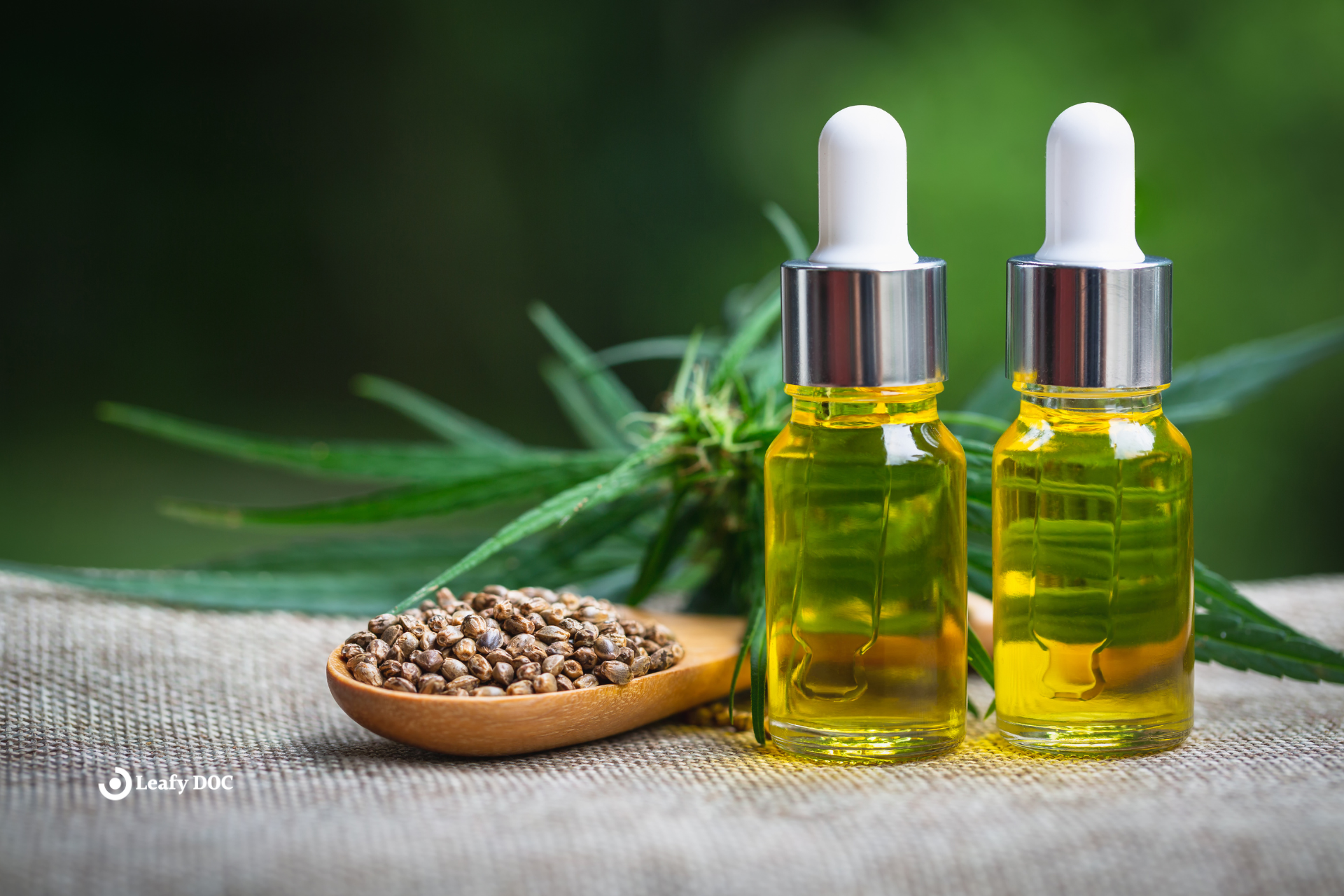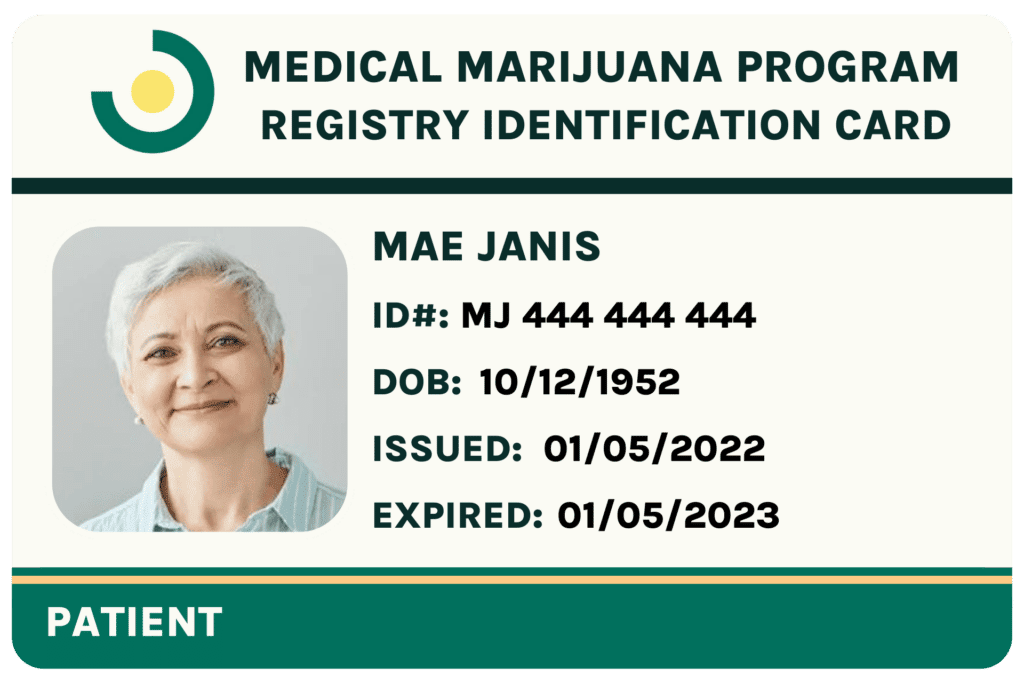How to Make Your Own Cannabis Tincture: A Step-by-Step Guide
by Haley Mills · April 27, 2023
Learn how to make your own cannabis tincture with our step-by-step guide. Discover the benefits of using cannabis extracts and how to create your own at home.

Unleash the herbal magic of cannabis and discover the incredible versatility of tinctures with our comprehensive guide to making your own cannabis tincture. With the ever-growing popularity of cannabis for recreational and medicinal purposes, it’s no surprise that enthusiasts are seeking innovative and convenient ways to harness the full potential of this powerful plant. Enter the world of cannabis tinctures, an easy-to-dose, discreet, and customizable method of consumption that has gained significant traction among the cannabis community.
This article provides a step-by-step guide to creating your very own high-quality cannabis tincture tailored to your preferences and needs. We’ve got you covered, from selecting the right strain to mastering the ideal extraction technique. So, let’s embark on this aromatic journey and unveil the secrets of creating a top-notch cannabis tincture right in the comfort of your own home.
What is a cannabis tincture?
A cannabis tincture is a concentrated liquid extract dissolving cannabis plant material in a solvent, typically alcohol or glycerin. This versatile and discreet method of consumption allows users to experience the therapeutic properties of cannabis without the need to smoke or vape. Tinctures are administered sublingually or mixed with food and beverages, providing a rapid and efficient way to deliver cannabinoids, such as THC and CBD, into the bloodstream.
Tincture Vs. CBD oil
Although often used interchangeably, cannabis tinctures and CBD oil have distinct differences that are important to understand. Cannabis tinctures are liquid extracts that dissolve cannabis plant material, containing cannabinoids like THC and CBD, in a solvent such as alcohol or glycerin. Tinctures are versatile, offering a range of formulations that can include varying ratios of THC to CBD, allowing users to tailor their experience to their preferences and needs. Tinctures can be administered sublingually or added to food and beverages for consumption.
On the other hand, CBD oil refers specifically to a liquid extract made from hemp or cannabis plants that contain a high concentration of CBD, a non-psychoactive cannabinoid known for its potential therapeutic benefits. CBD oil typically has little to no THC content and is often extracted using a carrier oil, such as MCT or hemp seed oil, rather than alcohol or glycerin. CBD oil is primarily used for its potential health benefits, targeting issues such as inflammation, anxiety, and pain management, without inducing the psychoactive effects associated with THC. CBD oil can be consumed sublingually or added to food and drinks like tinctures.
Tincture Vs. Edibles
Both cannabis tinctures and edibles offer alternative consumption methods for those who prefer not to smoke or vape. However, there are several key differences between these two options. Cannabis tinctures are liquid extracts administered sublingually or added to food and beverages, allowing for rapid absorption and precise dosing. Tinctures typically have a faster onset time, with effects noticeable within 15-45 minutes when taken sublingually. Their duration varies from 4 to 8 hours depending on the individual’s metabolism and method of consumption.
Conversely, edibles are food items infused with cannabis buds or oil, such as brownies, gummies, or chocolates. Edibles need to be digested and metabolized in the liver before the cannabinoids enter the bloodstream, which results in a slower onset time of 30 minutes to 2 hours. Due to this extended absorption process, the effects of edibles can be more potent and longer-lasting, ranging from 6 to 12 hours. However, this can also make it more challenging to determine the appropriate dosage, as factors like individual metabolism and other food items in the stomach can influence absorption rates and potency.
Types of cannabis extracts
- Tinctures: Liquid extracts made by dissolving cannabis plant material in a solvent such as alcohol or glycerin, used sublingually or added to food and beverages. It’s usually a runny cannabis oil extract.
- Infused Oils: Cannabis-infused oils, such as olive oil, coconut oil, or MCT oil, are made by heating cannabis plant material with a carrier oil to extract cannabinoids and other compounds.
- CO2 Oil: A cannabis extract produced using supercritical CO2 extraction, which uses high pressure and carbon dioxide to separate cannabinoids and terpenes from the plant material.
- Distillates: Highly refined cannabis extracts have gone through a distillation process to isolate specific cannabinoids, resulting in a nearly pure, odorless, and tasteless concentrate.
- Rick Simpson Oil (RSO): A potent, whole-plant cannabis extract created using an alcohol or hydrocarbon solvent, typically consumed orally or applied topically for medicinal purposes. RSO is a very potent cannabis extract that can be used for cancer treatment.
Types of Cannabis Concentrates
- Kief: A dry-sift concentrate made up of the trichomes, or resin glands, found on the surface of cannabis flowers, collected using a mesh screen.
- Hash: A pressed concentrate from compressed cannabis trichomes, often produced using heat, pressure, or cold water extraction methods.
- Rosin: A solventless concentrate made by applying heat and pressure to cannabis flowers or hash, resulting in a sticky, resinous substance.
- Shatter: A brittle, glass-like concentrate made from cannabis extracts that have undergone a solvent-based extraction process, typically using butane or propane as the solvent.
- Wax: A soft, pliable cannabis concentrate with a consistency similar to wax or butter, created through a solvent-based extraction process, often using butane or propane as the solvent.
- Crumble: A crumbly, solid cannabis concentrate with a slightly porous texture, made using a solvent-based extraction process, followed by a gentle purging process to remove the solvent.
- Live Resin: A potent cannabis concentrate made by flash-freezing freshly harvested cannabis flowers and using a solvent-based extraction process to capture the full spectrum of cannabinoids and terpenes.
- Sauce: A cannabis concentrate with a syrupy, liquid-like consistency, often containing high levels of terpenes, made using a solvent-based extraction process that emphasizes the preservation of the plant’s natural terpene profile.
- Diamonds: A highly potent cannabis concentrate consisting of large THCA or CBDA crystals, often suspended in terpene-rich sauce, created using a solvent-based extraction process followed by a slow crystallization process.
Solvent Vs. Non-Solvent Extractions
Solvent and non-solvent extractions are two primary methods used to create cannabis tinctures, each with unique advantages and drawbacks.
Solvent Extractions: A solvent dissolves the desired compounds, such as cannabinoids and terpenes, from the cannabis plant material. The most common solvents used in cannabis tincture preparation are:
- Ethanol: A high-proof grain alcohol, ethanol is a popular solvent for creating tinctures due to its efficiency in extracting a wide range of compounds, including cannabinoids, terpenes, and flavonoids. Ethanol is generally considered safe for consumption and evaporates quickly, making it ideal for producing potent and clean tinctures.
- Isopropyl Alcohol: Another option for solvent-based extractions, isopropyl alcohol can effectively dissolve cannabinoids and terpenes. However, it is not considered as safe for consumption as ethanol, and any residual solvent in the final product may pose health risks.
- Glycerin: A non-alcoholic solvent option, vegetable glycerin is a thick, sweet, viscous liquid derived from plant oils. Glycerin is a popular choice for those who prefer a non-alcoholic tincture or have dietary restrictions. While glycerin is a safe and mild solvent, it is generally considered less efficient at extracting cannabinoids and terpenes than alcohol, resulting in a less potent tincture.
While there are other chemical extraction methods such as butane hash oil to extract cannabis concentrates, these are the most popularly used.
Non-Solvent Extractions: Non-solvent extractions do not use solvents to isolate cannabinoids and other compounds from cannabis plant material. Instead, they separate the desired components by using mechanical pressure, heat, or cold methods. Some popular non-solvent extraction methods include:
- Cold Water Extraction: This method involves agitating cannabis plant material in cold water and ice, causing the trichomes to separate from the plant due to the low temperatures. The mixture is then filtered, and the trichomes are collected and dried. Although this method can produce a relatively clean and solvent-free product, it is not commonly used for tincture preparation.
- Rosin Press: A rosin press uses heat and mechanical pressure to extract the desired compounds from cannabis plant material. This method yields a concentrated, solvent-free product that can create a tincture by dissolving it in a carrier liquid. However, this method can be time-consuming and may require specialized equipment.
Oil Infusion Method
For those seeking a simple, no-heat approach to cannabis tinctures, the oil infusion method is straightforward and effective. Simply combine decarboxylated cannabis with a carrier oil of your choice. Allow the mixture to sit in a cool, dark place for three to five weeks, turning the jar daily to ensure even infusion. This method results in a canna-oil with comparable potency to those created with heat.
Alcohol-Based Tinctures
If you’re looking for a more traditional route, alcohol-based tinctures, often referred to as “Green Dragon,” offer a potent alternative. Start with ABV or decarbed cannabis and mix with high-proof alcohol such as Everclear or a strong vodka.
- Place the cannabis and alcohol in a mason jar.
- Seal the jar and let it rest in a cool, dark environment, shaking it once a day.
- After a few weeks, strain the liquid through a coffee filter to remove plant material, leaving you with a powerful tincture.
These methods, whether solvent-free or alcohol-based, provide diverse approaches to crafting cannabis tinctures, catering to both traditionalists and those seeking modern extraction techniques.
Step-By-Step Guide to Making Your Own Tincture
Creating a cannabis tincture at home can be a rewarding process, provided you follow some essential tips and steps. Let’s dive into our trusted recipe, enhanced with expert advice to ensure the best results:
Supplies:
- Cannabis flowers or trim (approximately 7-14 grams, depending on desired potency)
- High-proof alcohol, such as Everclear, or food-grade vegetable glycerin (approximately 2 cups)
- Glass jar with a tight-fitting lid
- Fine mesh strainer or cheesecloth
- Funnel
- Amber or blue glass dropper bottles for storage
- Gloves (optional, for handling cannabis and alcohol)
- Grinder or scissors (for breaking up the cannabis)
Ingredients:
- 7-14 grams of decarboxylated cannabis flowers or trim (adjust the amount based on your desired potency)
- 2 cups of high-proof alcohol or food-grade vegetable glycerin
Directions:
- Decarboxylate Your Cannabis: Preheat your oven to 240°F (115°C). Break up the cannabis into small pieces using a grinder or scissors. Spread the cannabis evenly on a parchment-lined baking sheet and bake for 30-40 minutes, stirring occasionally to ensure even heating. The cannabis should be dry and lightly browned when finished.
- Cannabis Preparation for Extraction: Allow the decarboxylated cannabis to cool, then transfer it to the glass jar. This step is crucial for activating the cannabinoids.
- Add the Solvent: Pour the high-proof alcohol or vegetable glycerin into the jar, ensuring the cannabis is completely submerged. Seal the jar tightly with the lid. Note: Coconut, MCT, or olive oils are excellent alternatives for those who prefer oil-based tinctures.
- Shake and Store: Shake the jar vigorously to help the solvent dissolve the cannabinoids and terpenes from the cannabis. Store the jar in a cool, dark place for at least 2-4 weeks, shaking it once a day to facilitate extraction. Longer storage will increase potency.
- Strain the Tincture: After the desired extraction time has passed, prepare a clean jar or bowl and place the fine mesh strainer or cheesecloth over it. Wearing gloves, if desired, pour the contents of the jar through the strainer or cheesecloth, separating the plant material from the liquid. Squeeze the plant material to extract as much liquid as possible.
- Bottle and Store: Use a funnel to transfer the tincture into amber or blue glass dropper bottles for storage. Seal the bottles tightly, and store them in a cool, dark place.
Additional Tips for Success:
- Potency Customization: Use almost equal amounts of oil (or alcohol) to fresh, decarbed cannabis for maximum potency: 500 ml olive or coconut oil to 440 to 460 g of cannabis. For reduced potency, adjust the cannabis amount accordingly, using half, quarter, or even lower proportions.
- Cannabis Type: If you prefer a cannabidiol-rich (CBD-rich) tincture, choose a cannabis variety high in CBD. For a THC-rich tincture, select a THC-dominant strain.
- Cannabinoid Content: Remember, there is approximately 1,000 mg of cannabinoids in every gram of cannabis. For example, a gram of 20% THC cannabis will contain 200 mg of THC.
- Intended Use: Infusing cannabis into olive oil is great for adding to recipes, while coconut oil is ideal for topical applications.
Your homemade cannabis tincture is now ready for use. Remember to start with a low dose and gradually increase it until you achieve the desired effects.
To ensure your tincture maintains its potency and extends its shelf life, store it properly. Use an airtight container, preferably a glass one like a mason jar. This helps prevent oxidation and preserves the tincture’s quality.
Keep the container in a cool, dark, dry place to protect it from light and heat, which can degrade the active compounds. Avoid direct sunlight, as this can cause the tincture to lose its effectiveness over time.
By following these storage tips, you’ll ensure that your tincture remains as effective as the day you made it, ready to deliver the calming or invigorating effects you desire whenever you need them.
Basic Steps and Ingredients for Making an Oil-Based Cannabis Tincture
Creating an oil-based cannabis tincture is a straightforward process that requires some essential tools, ingredients, and patience. Here’s a simplified guide to get you started.
What You’ll Need
- Equipment:
- A rimmed baking tray
- Baking paper (parchment paper)
- Slow cooker, double boiler, or a saucepan
- Cheesecloth or fine strainer
- Cooking twine for securing the cheesecloth
- Ingredients:
- 3.5 grams of cannabis flower
- 1/2 cup of cooking oil (such as coconut oil or olive oil)
Step-by-Step Instructions
Step 1: Decarboxylate the Cannabis
- Preparation: Break the cannabis flower into small pieces and spread them evenly on a baking tray lined with baking paper.
- Heating: Place the tray in an oven preheated to 240°F-248°F (115°C-120°C) for 30-40 minutes. Stir every 10 minutes to ensure even heating.
- Cooling: Remove from the oven and allow the cannabis to cool. It should appear darker, typically light brown or yellow.
Note: Skip this step if you’re using pre-vaped cannabis.
Step 2: Infuse the Oil
Combine your decarboxylated cannabis with the cooking oil using one of the following methods:
- Slow Cooker: Cook on low for 4-6 hours, stirring occasionally.
- Double Boiler: Use a heat-proof bowl over a saucepan of boiling water on low heat for 6-8 hours, stirring occasionally.
- Saucepan: On low heat, cook for about 3 hours, stirring regularly. This method is faster but can lead to scorching, so a small amount of water can be added to prevent this.
Important: Keep the oil temperature below 245°F (118°C).
Step 3: Strain and Store
- Straining: Use cheesecloth or a fine strainer to remove plant material from the oil.
- Storing: Pour your infused oil into an airtight container and keep it in a cool, dark, and dry location.
By following these steps, you’ll have a homemade oil-based cannabis tincture ready for use. Enjoy responsibly!
FAQs- Cannabis Tinctures
Here, we’ll answer your top questions about cannabis tinctures.
What are the benefits?
Cannabis tinctures offer various benefits, including accurate dosing, long shelf life, and the ability to customize the potency and effects to suit individual preferences. Furthermore, tinctures are favored by medical cannabis patients due to their fast-acting nature, allowing them to address symptoms more quickly and effectively than other consumption methods.
What are the risks?
Despite their numerous benefits, cannabis tinctures also come with potential risks. One primary concern is the possibility of overconsumption, particularly for inexperienced users unfamiliar with proper dosing. Overconsumption of THC, the psychoactive component in cannabis, can lead to temporary adverse effects, such as anxiety, paranoia, and dizziness.
It is essential to consult a healthcare professional before using cannabis tinctures, especially for those with underlying health conditions or concerns. Lastly, while cannabis is legal in many places, its legal status varies by jurisdiction, so it is crucial to understand and adhere to local laws and regulations to avoid potential legal consequences.
How should I dose cannabis tincture?
Determining the appropriate dosage for a cannabis tincture depends on several factors, including individual tolerance, body weight, and the desired effects. As a general rule of thumb, starting with a low dose and gradually increasing it until you achieve the desired outcome is always best. For newcomers, a dose of 2.5-5 mg of THC is recommended to gauge their reaction to the tincture. For more experienced users, a dose of 10-20 mg may be suitable.
It is essential to carefully read the label on your tincture bottle, as it should provide information about the concentration of THC or CBD per milliliter. Use a calibrated dropper to accurately measure your dose and place the liquid under your tongue for sublingual absorption or mix it with food or drink. Always wait for at least one to two hours before increasing the dose to avoid potential overconsumption.
How long does it take to kick in?
The onset time for cannabis tinctures varies depending on the method of consumption. When taken sublingually, tinctures are absorbed directly into the bloodstream through the mucous membranes under the tongue, typically leading to faster onset times. Users can expect to feel the effects within 15-45 minutes, with peak effects occurring around 90 minutes.
Alternatively, when tinctures are ingested with food or beverages, they are absorbed through the digestive system, which results in a slower onset of effects. In this case, users may not feel the full impact for 30 minutes to 2 hours after consumption, with peak effects occurring around 2-4 hours post-ingestion. Remembering these timeframes and being patient before considering increasing the dose is crucial.
How Do You Calculate Cannabis Tincture Dosage?
Calculating the dosage for cannabis tinctures is straightforward once you understand the formula. It involves knowing both your desired dose and the concentration of the tincture.
Step-by-Step Dosage Calculation:
- Determine Your Target Dose: Decide how many milligrams (mg) of cannabinoids you wish to consume.
- Know the Tincture’s Concentration: Check the bottle for the concentration, typically listed in milligrams per milliliter (mg/mL).
- Use the Formula: Apply the following formula to find out how much tincture you need:
- Volume of Dose (mL) = Target Dose (mg) / Concentration (mg/mL)
For instance, if you want to consume 100 mg of THC and your tincture has a concentration of 30 mg/mL, you’d perform this calculation: 100 mg divided by 30 mg/mL, equating to about 3.33 mL.
This formula ensures you get the precise dosage needed to meet your wellness goals. Always begin with a smaller dose and increase gradually to find your perfect balance.
How long do tincture effects last?
The duration of cannabis tincture effects depends on the individual’s metabolism, dosage, and method of consumption. Generally, when taken sublingually, tincture effects can last anywhere from 4 to 6 hours, with some residual effects potentially lingering for up to 8 hours. When ingested with food or beverages, tincture effects may last longer due to the extended absorption time through the digestive system.
In this case, users can expect the effects to last anywhere from 6 to 8 hours, with some residual effects potentially lasting up to 12 hours. Be sure to keep these durations in mind when dosing and always start low and go slow to ensure a comfortable and safe cannabis tincture experience.
Can I cook with cannabis tinctures?
Yes, cannabis tinctures can be used in cooking and incorporated into various recipes to infuse your favorite dishes with the benefits of cannabis. Their liquid form allows for easy mixing and even distribution of cannabinoids throughout the dish. When cooking with tinctures, be mindful of the dosage, and remember that heat can impact the potency of THC and CBD.
To maintain potency, add tinctures to dishes that don’t require high heat or prolonged cooking times, or mix them into sauces, dressings, or beverages. Additionally, consider using a tincture with a neutral flavor or one that complements the taste of your recipe to ensure a pleasant culinary experience.
What are the Best Cannabis Tincture Brands?
Some of the consistently trustworthy brands for your cannabis extract needs include the following:
- Papa & Barkley – Known for their award-winning Releaf Tinctures, they offer THC and CBD options, focusing on full-spectrum, whole-plant extracts.
- Mary’s Medicinals – A respected brand offering a variety of tinctures, including THC, CBD, and CBN formulations, emphasizing targeted effects and consistent dosing.
- Charlotte’s Web – Renowned for their high-quality, hemp-derived CBD tinctures, they provide a range of potencies and flavors to suit different preferences.
- Care By Design – Specializing in ratio-specific tinctures, they offer various formulations that blend THC and CBD in different proportions, catering to specific needs and experiences.
When choosing a tincture brand, always prioritize products that are lab-tested, transparent about their ingredients, and made from high-quality, ethically-sourced cannabis.
Where can I buy cannabis tinctures?
The availability of cannabis tinctures largely depends on the legal status of cannabis in your jurisdiction. In regions where medical or recreational cannabis is legal, tinctures can typically be purchased at licensed dispensaries, specialized cannabis shops, or online retailers within legal boundaries. When buying cannabis tinctures, ensure the retailer is reputable and adheres to local laws and regulations.
If you reside in a jurisdiction where cannabis remains illegal, it is critical to comply with local laws to avoid potential legal consequences. For hemp-derived CBD tinctures, which are legal in many places due to their low THC content, you may find them at health food stores, pharmacies, or online retailers that ship to your location.
Why is MCT Oil Commonly Used in Cannabis Tinctures?
MCT oil, short for medium-chain triglyceride oil, is a favorite for creating cannabis tinctures. Here’s why:
- Efficient Digestion: MCT oil consists of medium-length chains of fats known as triglycerides. These are digested swiftly and readily by our bodies, making them ideal for delivering nutrients efficiently.
- Excellent Carrier for Cannabinoids: Cannabinoids, the active compounds in cannabis, are lipophilic, meaning they love to bind with fats. MCT oil, derived primarily from coconut oil, provides a rich source of healthy fats that effectively bind with cannabinoids. This enhances the absorption of cannabinoids in the body, allowing you to get the desired effects more effectively.
- Versatility and Stability: MCT oil is not only versatile but also stable, making it an optimal choice for infusing tinctures. Its neutral flavor does not overpower the natural tones of the cannabis extract. Additionally, MCT oil tends to have a long shelf life, which helps in preserving the quality of your tincture over time.
In summary, MCT oil’s quick digestibility, strong fat content for optimal cannabinoid delivery, and stable nature make it a perfect choice for cannabis tinctures.
Cannabis Tinctures: A Versatile Option for All Ages
Cannabis tinctures offer a discreet and smoke-free way to experience the benefits of cannabis, making them ideal for diverse age groups. But how exactly does this form of cannabis prove to be suitable for various age demographics?
Easy on the Lungs
For individuals concerned about the health implications of smoking or vaping, especially minors or older adults with respiratory issues, tinctures provide a safer alternative. They eliminate exposure to harmful combustion byproducts, offering a cleaner consumption method.
Flexible Dosage Control
Tinctures allow for precise dosage adjustments, which is beneficial for both beginners and experienced users. This precision ensures that minors with serious medical conditions, who absolutely need controlled doses, can safely receive the exact amount they need under medical supervision.
Quick and Efficient Absorption
The sublingual application (placing drops under the tongue) leads to rapid absorption into the bloodstream. This quick action is especially advantageous for the elderly or children who may require immediate relief from symptoms such as pain or anxiety.
Discretion and Ease of Use
Tinctures are incredibly discreet, allowing users to consume them without drawing attention. This feature is useful for teens or adults who prefer not to share their medical choices publicly. Furthermore, tinctures come with clear measurement tools like droppers, making them simple to use regardless of age or experience with cannabis.
Versatility in Consumption
Beyond sublingual use, tinctures can be added to food or beverages. This adaptability makes it simple to incorporate cannabis into daily routines without the need for smoking or vaporizing, which are unsuitable for young users and might be less appealing for older adults.
By considering different age-related needs and preferences, cannabis tinctures emerge as a versatile and inclusive choice for individuals seeking alternative health solutions.
Final Thoughts on Cannabis Tinctures
By now, you’ve delved into the fascinating world of cannabis tinctures and acquired the knowledge to make your own potent concoction. Our step-by-step guide has illuminated the essentials, from selecting the perfect strain to understanding the optimal extraction method that best suits your needs. With your newfound expertise, you can confidently create a tailored cannabis tincture that caters to your specific preferences and requirements.
Not only will you enjoy the convenience and discreetness of this versatile method, but you’ll also benefit from the ability to control the dosage and fine-tune the effects. So, discover your inner herbalist as you embark on a delightful adventure of crafting your cannabis tincture, ready to elevate your cannabis experience to new heights.
Last Updated: May 19, 2025
Get Approved for Your Medical Marijuana Card in Minutes!

Get Your Medical Card
Connect with a licensed physician online in minutes

Like This Article?
Share with your friends
Table of Contents
Keep Reading
-
Stay Updated On Events At Medical Marijuana Dispensaries In PA
Stay up-to-date with the latest events at medical marijuana dispensaries in PA. Don’t miss out on exciting happenings – be the first to know! Click now and stay informed about PA dispensary events.
-
Relieving Pain With THC Vs CBD
Discover the ultimate showdown between THC and CBD for pain relief. Uncover the truth about how these compounds battle it out to provide relief, and click now to find out which one is right for you!
-
How to Get Your Online Medical Marijuana Card in Florida
Get your online medical marijuanas card in Florida with this step-by-step guide.



